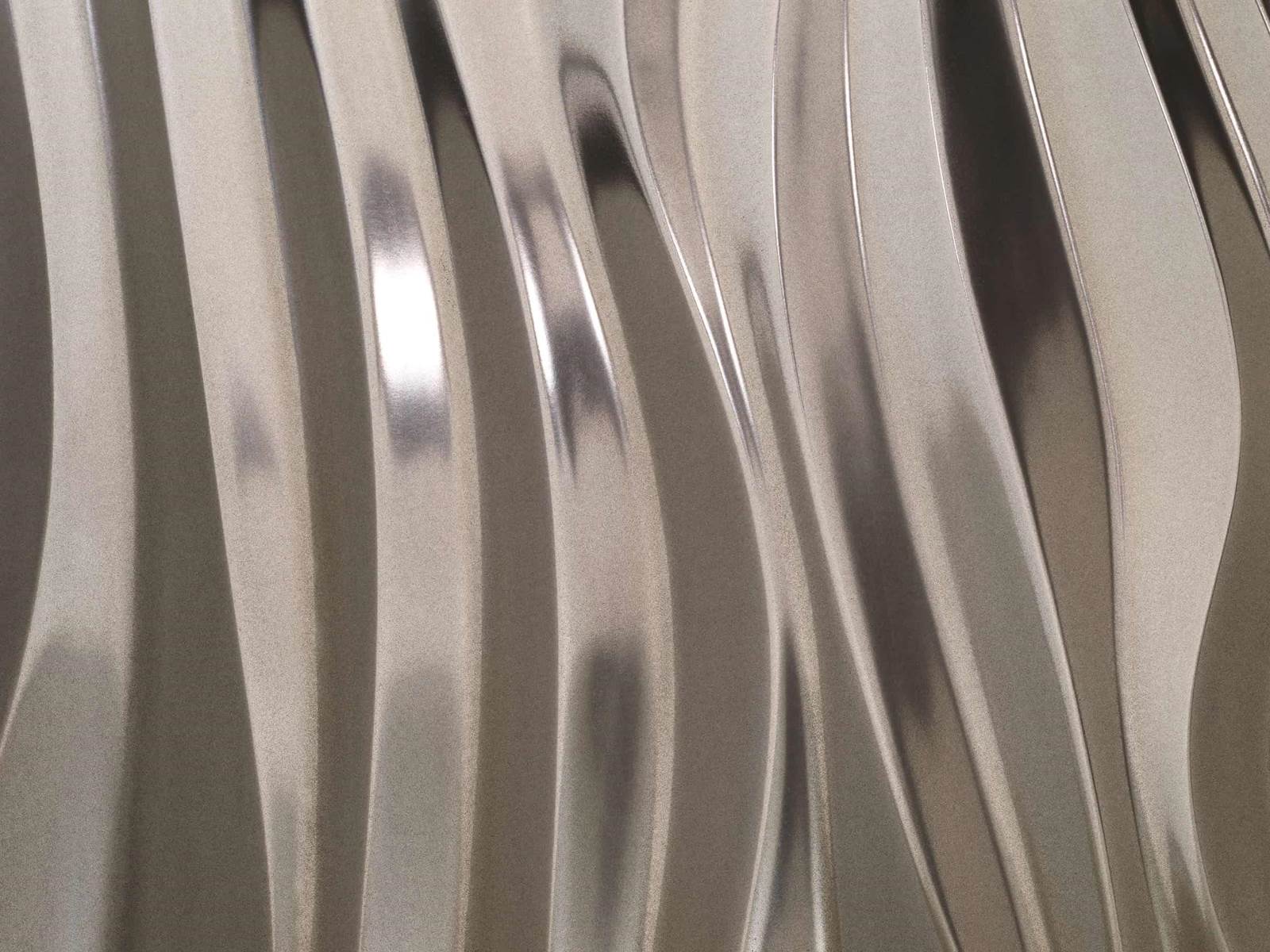
Nickel silver, despite its name, contains no actual silver. This alloy is a mix of nickel, copper, and zinc, giving it a shiny, silver-like appearance. Often used in musical instruments, jewelry, and coins, it’s prized for its durability and resistance to corrosion. Did you know that nickel silver is also known as German silver? This name comes from its origins in 19th-century Germany. The alloy’s unique properties make it a favorite among artisans and manufacturers alike. Whether you’re a hobbyist or just curious, these 50 facts about nickel silver will shed light on its fascinating characteristics and uses.
Key Takeaways:
- Nickel silver, also known as German silver, is a metal alloy made of copper, nickel, and zinc. It looks like silver but contains no actual silver. It's used in musical instruments, jewelry, and everyday items.
- Nickel silver is durable, non-magnetic, and resistant to corrosion. It's used in cutlery, coins, and eyeglass frames. While it's safe for everyday use, people with nickel allergies should be cautious.
What is Nickel Silver?
Nickel silver, also known as German silver, is a fascinating metal alloy. Despite its name, it contains no actual silver. Instead, it’s a blend of copper, nickel, and zinc. This unique combination gives it a shiny, silver-like appearance.
- Nickel silver is composed of 60% copper, 20% nickel, and 20% zinc.
- It was first developed in China around the 12th century.
- The alloy was introduced to Europe in the late 18th century.
- Nickel silver is often used in musical instruments like flutes and saxophones.
- It’s popular in jewelry making due to its bright, silver-like finish.
Properties of Nickel Silver
Nickel silver boasts several interesting properties that make it useful in various applications. Its durability and resistance to corrosion are particularly noteworthy.
- Nickel silver is highly resistant to tarnish and corrosion.
- It has a melting point of around 1,100°C (2,012°F).
- The alloy is non-magnetic.
- It has a density of approximately 8.5 grams per cubic centimeter.
- Nickel silver is known for its excellent workability and can be easily shaped.
Uses of Nickel Silver
This versatile alloy finds its way into many everyday items. From household goods to industrial applications, nickel silver is everywhere.
- Nickel silver is commonly used in cutlery and tableware.
- It’s a popular material for making coins.
- The alloy is used in the production of zippers.
- Nickel silver is often found in eyeglass frames.
- It’s used in the manufacture of model trains and other hobby items.
Nickel Silver in Art and Design
Artists and designers appreciate nickel silver for its aesthetic qualities. Its ability to mimic the look of silver without the high cost makes it a favorite.
- Nickel silver is used in decorative items like vases and picture frames.
- It’s a popular material for crafting belt buckles.
- The alloy is often used in the creation of costume jewelry.
- Nickel silver is used in the production of musical instrument keys.
- It’s a favored material for making badges and medals.
Nickel Silver in History
Nickel silver has a rich history that spans centuries. Its development and use have evolved over time, reflecting changes in technology and culture.
- The alloy was originally called "paktong" in China.
- It was brought to Europe by German metallurgists.
- Nickel silver was used in the 19th century to make affordable silverware.
- The alloy gained popularity during the Victorian era.
- It was used in the construction of the first telegraph wires.
Health and Safety Concerns
While nickel silver is generally safe, there are some health considerations to keep in mind, especially for those with nickel allergies.
- Nickel silver can cause allergic reactions in people sensitive to nickel.
- Prolonged exposure to nickel can lead to dermatitis.
- The alloy is considered safe for use in food and drink containers.
- Nickel silver is non-toxic when used in everyday items.
- Proper handling and care can minimize the risk of allergic reactions.
Nickel Silver vs. Sterling Silver
Though they look similar, nickel silver and sterling silver have distinct differences. Understanding these can help in choosing the right material for various applications.
- Sterling silver contains 92.5% pure silver.
- Nickel silver has no actual silver content.
- Sterling silver is softer and more prone to tarnish.
- Nickel silver is more durable and resistant to corrosion.
- Sterling silver is more expensive due to its silver content.
Environmental Impact of Nickel Silver
Like all materials, nickel silver has an environmental footprint. Its production and disposal can impact the environment in various ways.
- Nickel silver production involves mining for copper, nickel, and zinc.
- The mining process can lead to habitat destruction and pollution.
- Recycling nickel silver can reduce its environmental impact.
- The alloy is recyclable and can be reused in new products.
- Sustainable practices in mining and manufacturing can lessen its environmental footprint.
Fun Facts about Nickel Silver
Nickel silver has some quirky and interesting aspects that make it even more intriguing. Here are a few fun facts to ponder.
- Nickel silver is used in the making of some types of bagpipes.
- The alloy is often used in the restoration of antique items.
- It’s a popular material for making chess pieces.
- Nickel silver is used in the production of some types of fishing lures.
- The alloy is sometimes used in the creation of steampunk art.
Nickel Silver in Modern Times
Today, nickel silver continues to be a valuable material in various industries. Its unique properties ensure its ongoing relevance and utility.
- Nickel silver is used in the electronics industry for connectors and contacts.
- The alloy is popular in the fashion industry for accessories.
- It’s used in the automotive industry for decorative trim.
- Nickel silver is found in some types of kitchen appliances.
- The alloy remains a popular choice for crafting and DIY projects.
The Final Word on Nickel Silver
Nickel silver, despite its name, contains no actual silver. This alloy, made from copper, nickel, and zinc, boasts a silvery appearance that has fooled many. It's prized for its durability, corrosion resistance, and ease of polishing, making it a favorite in various industries. From musical instruments to cutlery, this versatile material has found its way into countless everyday items. Its hypoallergenic properties also make it a popular choice for jewelry. While it may not hold the same value as sterling silver, nickel silver's unique blend of affordability and functionality ensures its continued use. Next time you come across a shiny object, take a closer look—it might just be nickel silver. Whether you're a collector, a musician, or just someone curious about materials, knowing these facts can give you a new appreciation for this fascinating alloy.
Frequently Asked Questions
Was this page helpful?
Our commitment to delivering trustworthy and engaging content is at the heart of what we do. Each fact on our site is contributed by real users like you, bringing a wealth of diverse insights and information. To ensure the highest standards of accuracy and reliability, our dedicated editors meticulously review each submission. This process guarantees that the facts we share are not only fascinating but also credible. Trust in our commitment to quality and authenticity as you explore and learn with us.


